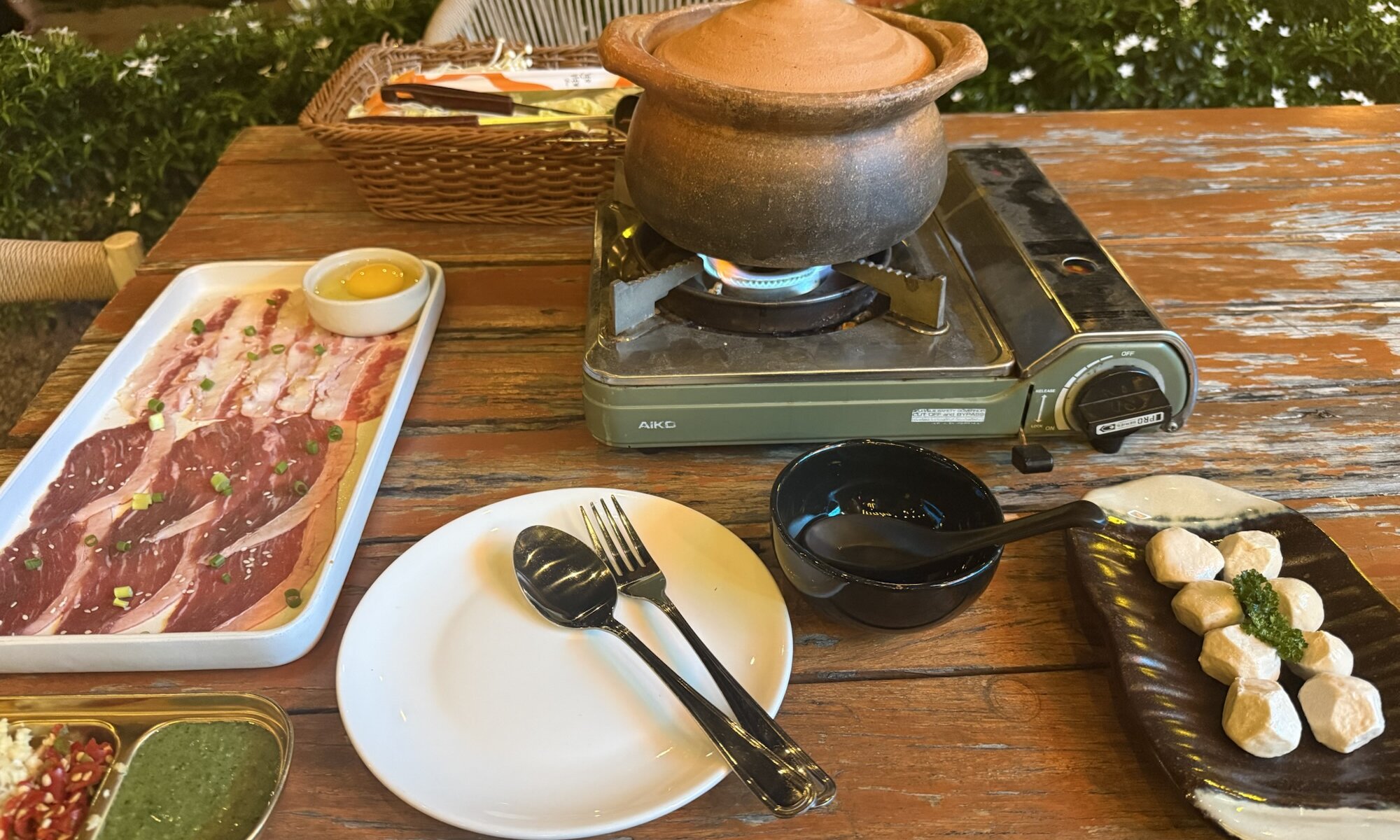A communal dining experience that centres around a simmering pot of broth placed at the table, where diners cook a variety of fresh ingredients themselves. It is an interactive meal, combining social engagement with the sensory pleasure of watching meats, vegetables, noodles, and seafood slowly cook in the bubbling fluid. The dish is popular in many parts of Asia, but its appeal lies in the ability to tailor each serving to individual tastes and to enjoy the meal at a leisurely pace with friends or family. The broth itself can vary widely, from mild and clear to richly spiced or herbal, often serving as the foundational flavour of the entire meal.
Eating hotpot involves selecting raw ingredients, which are then dipped into the pot to cook for a matter of minutes. Typical ingredients include thinly sliced beef or pork, fish balls, mushrooms, leafy greens, tofu, and glass noodles. Once cooked, the pieces are usually dipped into an array of sauces designed to complement and enhance the nuanced flavours. The sauces often include combinations of soy sauce, chilli, garlic, lime, and sometimes fermented bean paste or sesame oil, allowing each diner to create their own personalised seasoning. This interactive element makes hotpot a highly social meal, encouraging conversation and shared enjoyment.
What distinguishes hotpot in Thailand is its vibrant flavour palette and the signature Thai herbs and spices used, which infuse the broth with a unique character. Thai hotpot commonly includes ingredients like lemongrass, galangal, kaffir lime leaves, and bird’s eye chillies, creating a broth that is aromatic, spicy, and refreshing all at once. Additionally, Thai hotpot frequently incorporates seafood – reflecting the country’s coastal geography – alongside classic meats and vegetables. The interplay between fresh herbs, spicy chillies, and tangy lime juice in both the broth and accompanying dips elevates the dish beyond a simple cooking method to a full sensory experience.
In Thailand, hotpot is often enjoyed outdoors in informal settings or specialised restaurants that provide a lively atmosphere. It is particularly popular during cooler evenings or rainy weather when the warmth of the bubbling pot offers comfort and conviviality. Unlike some more formal dining styles, Thai hotpot is casual and accessible, often accompanied by sticky rice or steamed jasmine rice to balance the powerful flavours. This combination of warmth, sharing, and bold taste makes Thai hotpot not just a meal, but a celebration of the country’s rich culinary traditions and social culture.
River view bar
เชียงใหม่
Thailand
Loading map...


